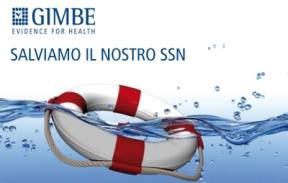Archivio > Vai alle uscite del 2016 > Vai aVolume 16, Numero 64 - Dicembre 2016
- XX Congresso SIMRI
Epidemiologia delle infezioni batteriche in una popolazione di soggetti con discinesia ciliare primaria

La discinesia ciliare primaria (DCP) è una malattia rara, geneticamente eterogenea, caratterizzata da una compromissione della clearance mucociliare e da infezioni respiratorie ricorrenti/recidivanti o croniche. Pochi studi, tuttavia, hanno valutato l’epidemiologia delle infezioni respiratorie nella DCP. Abbiamo eseguito l’esame colturale dell’espettorato in 126 pazienti (72 bambini) con DCP e in 139 soggetti (104 bambini) con infezioni respiratorie ricorrenti non affetti da DCP. Nei soggetti con DCP sono stati isolati Pseudomonas aeruginosa (33.3% dei casi), Staphylococcus aureus (17.3%), Haemophilus influenzae (8.7%), Stenotrophomonas maltophilia (4.0%) e Streptococcus pneumoniae (4.0%), mentre nel 32.5% dei casi l’esame colturale era negativo. Nei soggetti non affetti sono stati isolati P. aeruginosa (7.9%), S. aureus (16.5%), H. influenzae (6.5%), S. maltophilia (2.2%) e S. pneumoniae (1.4%), mentre nel 65.5% dei casi l’esame colturale era negativo. Confrontando le due popolazioni, sia complessivamente sia separando i bambini dagli adulti, emergeva soltanto una maggior prevalenza di P. aeruginosa nella DCP (p <0.001 in entrambi i gruppi di età). In 85 soggetti con DCP seguiti longitudinalmente sono stati raccolti 592 campioni di espettorato in 3.5 anni. Vi era una correlazione positiva tra età e P. aeruginosa (r= 0.88, p <0.01) e negativa tra età e S. aureus (r= -0,43, p <0.01). I nostri risultati confermano l’importanza delle infezioni nella DCP, con elevata prevalenza di P.aeruginosa ad ogni età, e mostrano come queste siano sostenute soprattutto da S. aureus nelle prime epoche della vita e da P. aeruginosa successivamente.
Primary ciliary dyskinesia (PCD) is a rare, genetically heterogeneous disease, characterized by impaired mucociliary clearance and recurring/relapsing or chronic respiratory infections. Few studies, however, have assessed the epidemiology of respiratory infections in PCD. We collected sputum culture from 126 patients (72 children) with PCD and 139 non-PCD subjects (104 children) with recurrent respiratory infections. Pathogens isolated in PCD subjects were Pseudomonas aeruginosa (33.3% of the cases), Staphylococcus aureus (17.3%), Haemophilus influenzae (8.7%), Stenotrophomonas maltophilia (4.0%), and Streptococcus pneumoniae (4.0%), while sputum culture was negative in 32.5% of the cases. In non-PCD subjects P. aeruginosa (7.9%), S. aureus (16.5%), H. influenzae (6.5%), S. maltophilia (2.2%), and S. pneumoniae (1.4 %) were isolated, while sputum culture was negative in 65.5% of the cases. P. aeruginosa had significantly higher prevalence in the PCD group both in the whole population and after separating children from adults (p<0.001 in each group of age). In 85 PCD patients followed longitudinally 592 sputum samples were collected over 3.5 years, and a positive correlation was observed between age and P. aeruginosa (r = 0.88, p <0.01), while there was a negative relationship between age and S. aureus (r = -0.43, p <0.01). Our results confirm the importance of infections in PCD, with high prevalence of P. aeruginosa at any age, and show that they are caused mainly by S. aureus in early stages of life and by P. aeruginosa afterwards.
Scarica il pdf dell'articolo






